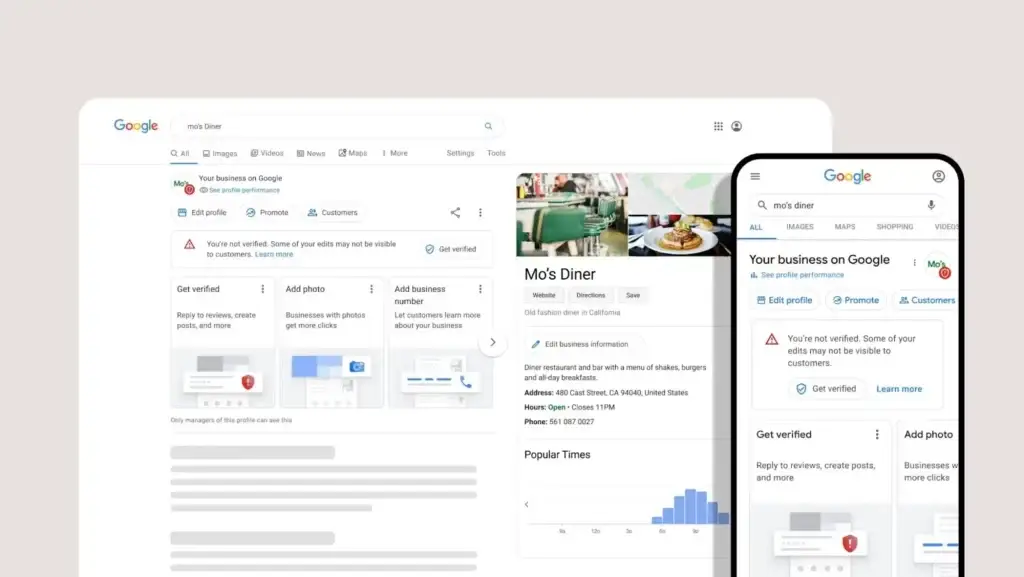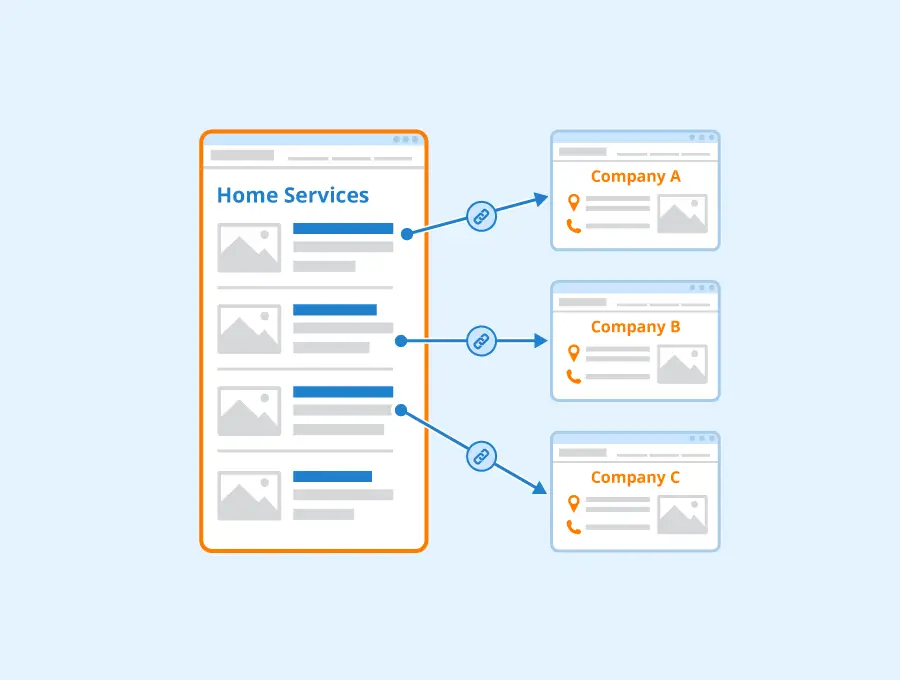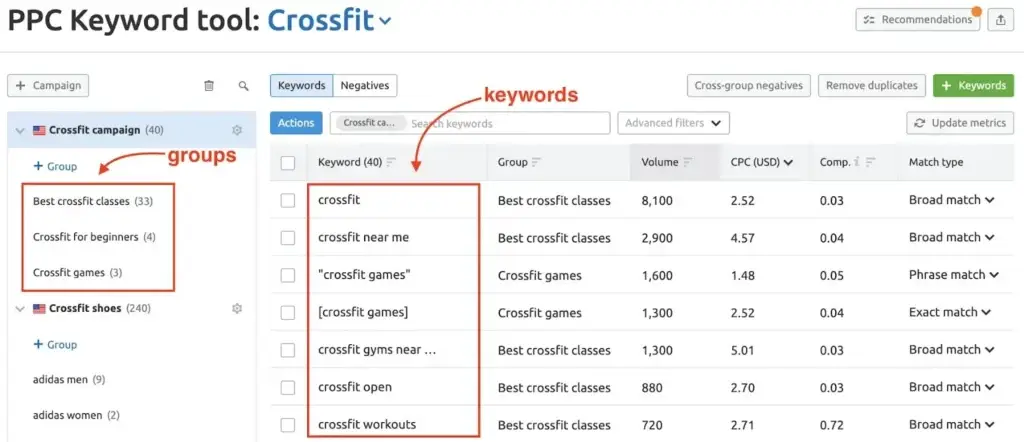In simple terms, SEM, or Search Engine Marketing, helps your business show up where people are looking, especially on search engines like Google or Bing.
For local businesses, SEM isn’t just about being online; it’s about being found by the right people in your community.
Whether you’re a bakery, a hardware store, or a yoga studio, SEM helps you pop up in searches when locals are hunting for what you offer.
We’ll walk you through the top 5 best tactics for SEM for local business, especially if you’re just starting.
We’ll explore tactics that are doable and effective, even if you’re not a tech wizard.
After all, every great journey starts with a solid plan and a step-by-step guide.
What you need to know about SEM for local businesses
SEM is a blend of Google and Bing Ads with SEO, which is short for Search Engine Optimisation.
It’s a more holistic approach, rather than just focusing on one thing at a time.
Imagine SEM as a two-sided coin.
On one side, you have Google and Bing Ads.
These are like paid shortcuts to get your business in front of people.
On the other side, there’s SEO, which is more about the long game.
It involves tweaking your website and content so it naturally ranks higher in search results.
The beauty of SEM for local businesses lies in using both sides of the coin.
It’s not about choosing ads over SEO or vice versa.
It’s about understanding that each has its own role and, when used together, they can really help your business stand out online.
Tactic 1: signing up to local directories to get more visibility
One of the first steps in SEM for your local business is getting listed in local directories.
It’s like putting your business on the map where people are already looking.
The key player here is Google Business Profile (GMB).

It’s like the main stage for local businesses online.
Setting up your profile on GMB should be your first move.
Once you’re there, you’re more visible when people search for what you offer in your area.
After GMB, there are other platforms like:
- Yelp
- Bing Places for Business
- Facebook Business
- and Yellow Pages
Each of these directories can help you reach more people.
Now, filling out profiles on these directories can feel like a bit of a chore.
It’s like filling in a bunch of paperwork.
But think of it as a one-and-done deal. Once your information is out there, it stays out there.
Here are some tips for making the most of these directories:
- Fill in every detail: Don’t leave blanks. The more complete your profile, the better.
- Make it compelling: Add pictures, a catchy description of your business, and anything that sets you apart.
- Keep it consistent: Make sure your business name, address, and phone number are the same across all directories. This helps people and search engines trust your info more.
Setting up these profiles takes some time and effort, but it’s worth it.
It’s a foundational step in SEM that can help your local business gain more visibility and credibility online.
Tactic 2: creating regular fresh content
Keeping your website stocked with fresh, relevant content is a solid SEM strategy for local businesses.
It’s like keeping the lights on, showing both your customers and search engines that you’re active and current.
Here’s a simple guide to get you rolling:
Discovering what to write about
Use tools like Ahrefs or Semrush. They’re good at pointing you in the right direction with what local people are searching for. This helps you create content that’s not just interesting, but actually wanted.
Planning your content
A calendar is your friend here. Plan your posts monthly to keep a steady flow of content. It’s about finding a rhythm that works for you and sticking to it.
Mixing content types
Don’t just focus on one type of content. Blend in articles, videos, and quick business updates. Variety keeps things interesting for your audience.
Smart use of AI
AI tools can help with brainstorming and drafting. They’re like having an assistant for the heavy lifting of content creation. Just add your unique touch to keep things personal.
Creating regular updates
Aim for at least one new piece of content each week. Consistency is key.
Engaging with your audience
Make your content interactive. Encourage comments, questions, and shares. This increases engagement and gives your content a wider reach.
Tracking what works
Use analytics tools to see which content gets the most attention. This tells you what’s working and what’s not, so you can adjust your strategy accordingly.
By following this workflow, you’re not just ticking a box. You’re actively participating in the digital conversation about your local business.
This consistent effort can significantly boost your local SEM efforts.
Tactic 3: localised pages that help expand your reach (SEO)
So, let’s dive into localised pages. Think of them as your business’s way of saying, “Hey, we’re part of your neighbourhood.”
Why go local?
First off, why bother with localised pages? Simple. They help people in different areas feel like you’re speaking directly to them.
It’s like having a tailored suit instead of a one-size-fits-all.

Here’s a step-by-step guide to get these pages up and running:
- Identify your locations: List the areas where you’re active. Each deserves its own page.
- Create unique Content for each page: No copy-pasting here. Tailor the content to reflect local events, news, or even local language quirks.
- Local keywords: Use words people in that area would use to search for your services.
- Map it out: Literally. Include a map and directions. It’s like leaving breadcrumbs for people to find you.
- Local testimonials: If you’ve got happy customers in that area, let them sing your praises on these pages.
- Content that resonates: Tailoring content isn’t just about slapping a city name on the page. It’s about understanding what makes each area tick. Maybe people in one city love their coffee shops. In another, it’s all about community events. Use these quirks in your content.
The aim is to create a small-town feel on your website. People love feeling like they’re dealing with a neighbour, not just a company.
So, get to know each area and let that knowledge shine through on each localised page.
By doing this, you’re not just another faceless business on the web. You’re a part of their community, their day-to-day life.
Tactic 4: fine-tuning your website’s on-page and technical SEO
Alright, let’s talk about sprucing up your website with on-page and technical SEO.
Why bother with SEO?
For local businesses, SEO is your silent salesman.
It works round the clock, making sure your business pops up when people in your area search for what you offer.
Without it, you’re like a needle in a digital haystack.

Here’s how to get your website’s SEO in shape:
- Keyword mapping: This means using the right words in the right places. Think of it like guiding people and search engines to your website with the right words.
- Local schema: This is a bit techy, but it’s about marking up your website so search engines understand you’re a local business. It’s like highlighting your local address and phone number in neon lights for Google.
- Page speed: Make sure your website loads fast. People have the patience of a goldfish online (though not technically confirmed). If your site’s slow, they’re gone.
- Mobile-friendly: More people browse on phones than computers now. Make sure your website looks good on a small screen.
Tools of the trade
For WordPress users, plugins like RankMath can be a game changer.
They guide you through optimising each page, sort of like a GPS for SEO.
They also help with that local schema stuff, making it less of a headache.
By focusing on these areas, you’re not just making your website look good; you’re making it work smarter.
Tactic 5: Using customer reviews and feedback
Customer reviews are like word-of-mouth these days.
When people in your local area see positive feedback, it’s like getting a thumbs-up from a friend.
This social proof can sway their decision to choose your business over others.
How to get more customer reviews
- Ask for Reviews: don’t be shy. After a sale or service, ask customers to leave a review. It can be a simple request at the end of a transaction or a follow-up email.
- Make it Easy: provide direct links to your review platforms. The fewer clicks needed, the better. I tend to write my reviews on behalf of clients and get their approval.
- Incentivise: consider offering a small thank you, like a discount on their next purchase, for taking the time to review.
How to respond to reviews
- Acknowledge every review: whether it’s a glowing praise or a critical note, respond to each review. It shows you value customer feedback and are committed to improving.
- Use reviews in your marketing: feature standout reviews on your website and social media. It’s like letting your satisfied customers do the talking for you.
- Learn from feedback: use reviews to identify areas for improvement in your products or services.
Reviews don’t just make your business look good; they also improve your local search visibility.
Search engines favour businesses with higher ratings and more reviews, as it indicates reliability and popularity in the local community.
By actively managing and incorporating customer reviews, you’re not just boosting your online reputation; you’re also making your business more visible to potential local customers.
Your next steps in SEM — growing your local business
You’ve now got a clear idea of the SEM tactics that can help your local business. What’s next? It’s about getting into action.
Start with one of the tactics.
For instance, listing your business in local directories is straightforward and can have immediate benefits.
It’s a simple task but can significantly increase your visibility.
Next, focus on your website content.
Regular updates with relevant and engaging material can improve your SEO and keep your audience interested.
This step is ongoing and requires a bit of creativity and planning, but it’s worth it.
SEO and localised pages might seem complex, but they are crucial for reaching the right audience.
Spend time understanding SEO best practices and tailoring your content for different local audiences.
This can help increase your relevance in searches in those areas.
Finally, don’t underestimate the power of customer reviews.
Encourage your customers to leave feedback and use this to improve and promote your business.
It’s a valuable tool for building trust and attracting new customers.
Remember, these steps are not a one-time effort but an ongoing process.
Stay consistent, and you’ll see your business grow in your local community. Keep at it, and the results will come.


